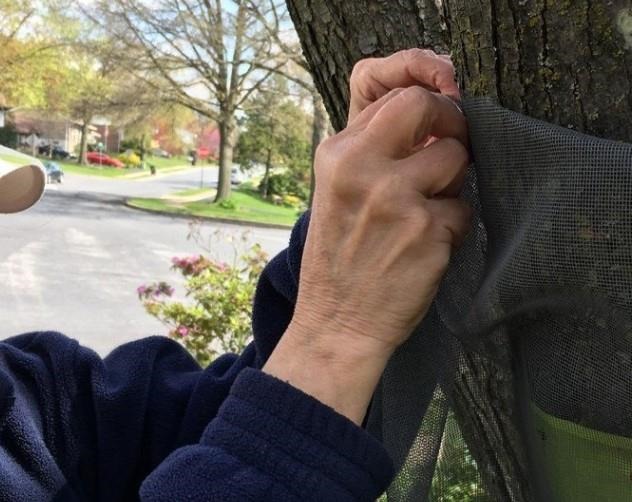By Lois Miklas and Emelie Swackhamer et.al
The spotted lanternfly (SLF) is an invasive insect first detected in the United States in 2014. Its feeding habits threaten Pennsylvania's natural ecosystems, landscapes, and agriculture—including the grape, tree-fruit, hardwood, and nursery industries.
Trapping Spotted Lanternfly
There are a variety of options for SLF management, but one way to kill a lot of SLF without using insecticides is to trap them. The immature lanternflies (called nymphs) are often blown out of the canopy of the trees where they are feeding. Nymphs then walk to the trunk of trees and climb back up to start feeding again. We can take advantage of this predictable behavior of the nymphs by using traps to catch them as they climb up trees.
Wildlife Barriers a Necessity with Sticky Band Traps
Sticky bands placed around tree trunks have been found to trap both spotted lanternfly nymphs and—to some extent—adult spotted lanternflies. Trapping unintended targets, including songbirds and beneficial insects, is a major drawback to this method of control. If a resident decides to use a sticky band trap, they should use a wildlife barrier, which greatly reduces the chances of catching non-target wildlife. A wildlife barrier will not completely eliminate the possibility of a sticky band capturing an animal or beneficial insect, but it may reduce the likelihood and using a wildlife barrier is a good practice. ( Circle traps are an alternative to sticky bands and are less likely to capture birds and some other creatures.)
How to Create a Wildlife Barrier
Residents have used flypaper, duct tape, and other tacky materials to create a sticky band around a tree to capture spotted lanternflies. Initially, chicken wire was thought to be an adequate wildlife barrier, but this is no longer recommended since the mesh size does not prohibit access by small birds and beneficial insects. Here are instructions for creating an effective wildlife barrier:
- Materials—flexible window screening and push pins.
- Cut a strip of window screening that is at about one-and-a-half times the diameter of the tree and about three times as wide as the sticky trap.
- Attach the window screening to the tree above the sticky band with push pins, pleating it as you attach it so that it stands out from the tree and does not stick to the band.

Photo credit: Penn State Extension
Additional Steps to Prevent Unintended Wildlife Catch
- Place the sticky band tightly against the tree, so that wildlife cannot get caught underneath it.
- Making the sticky band narrow, about 5 inches or less, will reduce the chances of catching wildlife other than spotted lanternflies.
- Check the sticky band every day.
- If you capture an animal, do not attempt to free it by yourself, so that you do not endanger yourself or the animal. Cover the exposed sticky material with plastic wrap or tissue paper and carefully remove the entire band from the tree. Contact a wildlife rehabilitation center.
When deciding to use trapping to control spotted lanternflies, consider the fact that traps may kill a large number of SLF, however, they do not prevent new infestations. A sticky band trap may be an effective method to protect a particular tree in the landscape but should never be erected without the use of a wildlife barrier.
Source : psu.edu